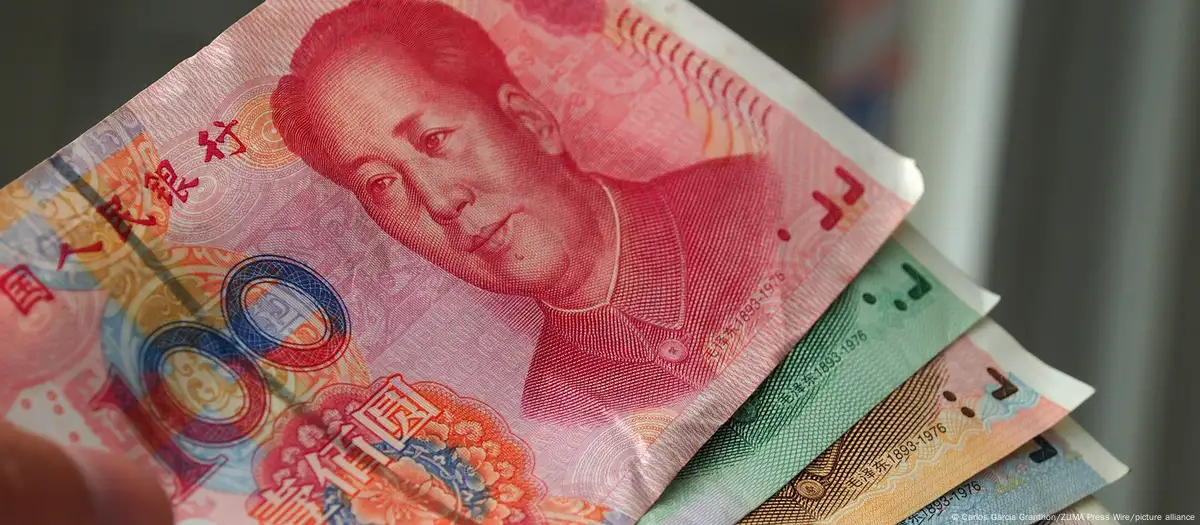China is accelerating its efforts to reduce dependence on the U.S. dollar, and recent data shows the yuan’s growing influence in global trade and finance. Despite ongoing challenges, Beijing’s long-term goal is clear—shift the global financial balance and make the yuan a key player on the world stage.
What Happened: China’s Major Step Toward Dollar Independence
China’s push to globalize the yuan took a significant leap forward in 2023. Following the 2008 financial crisis, Beijing began a long-term initiative to internationalize its currency. By 2023, the yuan accounted for more than 30% of China’s $6.2 trillion global merchandise trade, briefly surpassing the euro as the second most used currency in global trade finance.
Zhu Hexin, Deputy Governor of the People’s Bank of China, confirmed this milestone in June 2023. The push was further strengthened by geopolitical tensions, particularly after Russia’s invasion of Ukraine, when China increased yuan-based transactions with Russia, Iran, and Argentina—countries seeking alternatives to the U.S. dollar in energy and trade deals.
Background: Who’s Behind China’s Push for Yuan Internationalization?
China’s gradual approach—often called “regionalization”—focuses on strengthening the yuan’s role in the Global South and among Belt and Road Initiative (BRI) partner nations.
Unlike the U.S. dollar, China’s currency remains under tight government control. Beijing has made it clear that its goal isn’t a fully free-floating yuan, but rather a trade-focused global currency.
By 2023, the yuan had become the second most used currency in global trade finance, though still trailing far behind the dollar. According to the International Monetary Fund (IMF), the yuan’s share of global currency reserves also reached an all-time high of 2.4%.
Rise of the Yuan: China’s Strategic Tools and Financial Innovation
Beijing’s rise in global finance rests on several key pillars designed to expand yuan usage.
Cross-Border Interbank Payment System (CIPS)
China’s CIPS network serves as an alternative to the U.S.-dominated SWIFT system, facilitating international transactions in yuan and giving Chinese banks greater autonomy in cross-border settlements.
Digital Yuan (CBDC)
China’s digital yuan, or central bank digital currency (CBDC), is another revolutionary tool. With participation from over 20 countries in its pilot phase, the digital yuan promises to streamline international payments and reduce transaction costs.
Yuan-Denominated Debt and Loans
China’s lending strategy also plays a major role. Countries such as Kenya, Angola, and Indonesia are increasingly issuing yuan-denominated bonds and converting dollar-based debt into yuan. This shift allows developing nations to benefit from lower interest rates and reduced U.S. dollar exposure.
Global Reactions: Support, Skepticism, and Debate
China’s yuan ambitions have sparked mixed reactions worldwide.
Supporters view it as a necessary step toward economic independence and a more multipolar financial system. Economists like Miguel Otero-Iglesias praise Beijing’s methodical approach, arguing that slow and steady expansion reduces risk.
However, critics doubt whether China’s state-controlled financial system can sustain full currency liberalization. They argue that without open capital markets, the yuan cannot truly compete with the U.S. dollar’s global liquidity and trust.
On social media, the conversation is split—many users from developing nations welcome alternatives to dollar dominance, while Western analysts remain cautious about the yuan’s long-term potential.
What’s Next: The Future of the Yuan in Global Finance
Looking ahead, China’s Finance Ministry is expected to expand yuan integration in global trade through new bilateral partnerships and digital currency initiatives. Chinese energy companies have increasingly demanded payments in yuan, particularly for oil and commodity transactions.
Still, Beijing remains reluctant to fully liberalize the yuan, as the Chinese Communist Party maintains strict control over currency policy. Experts suggest that without full convertibility, the yuan’s challenge to the dollar will remain limited.
Conclusion: Can the Yuan Truly Rival the U.S. Dollar?
China’s yuan globalization strategy is reshaping parts of global trade, especially in Asia, Africa, and Latin America. However, until Beijing embraces market liberalization and capital freedom, the U.S. dollar’s dominance is unlikely to fade anytime soon.
The coming years will determine whether the yuan becomes a true global contender or remains a regional powerhouse in China’s growing sphere of influence.


1 thought on “China’s Push for Yuan Globalization: Is the US Dollar’s Reign in Jeopardy?”